Walking Holidays in Norfolk
It’s hardly surprising that people talk about Nelson’s Norfolk. The openness of the landscape views with the vastness of the skies, but it is the rim of coastline that steals the show.
Sent to school in the county’s fine medieval city of Norwich, Trafalgar’s hero learnt to sail in Norfolk’s timeless creeks. Today the sailing still attracts a gentle yachting fraternity. Visiting feathered migrants draw in the occasional flock of birdwatchers. Above all though, it’s the wildness and tranquility of this Area of Outstanding Natural Beauty which are literally awesome.
We can’t pinpoint which bit we’ve fallen in love with the most, but we’ve tried to give a little background to a few key places included in our walking breaks and cycling holidays in Norfolk.
Walking Holidays for Singles
Walking breaks are the ideal choice for singles who want to explore the UK countryside. Just you and exhilarating Norfolk views, where you can see across miles of land or look out to sea.
Looking for self guided bike tours in England? Find out more about cycling in Norfolk
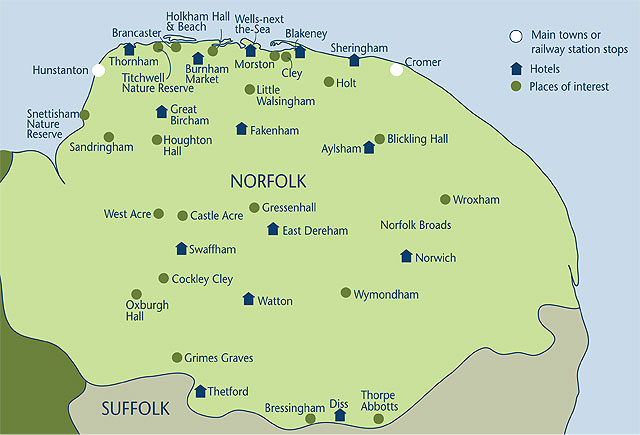
Aylsham
An important centre for the manufacture of linen and worsted cloth for some 500 years, this charming little town is packed with historic buildings. The Market Square is particularly picturesque surrounded by 18th C. shops and town houses. The place has a reputation for antiques and auctions. There are links with The Broads on the narrow gauge Bure Valley Railway which steams along to Wroxham. Humphry Repton, the famous 18th C. landscape gardener is buried in the churchyard.
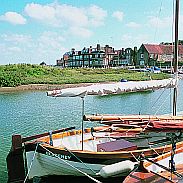 Blakeney
Blakeney
This ancient port at the mouth of the River Glaven is a pretty village full of quaint flint fishermen’s cottages, and busy in summer with yachts and other pleasure craft which can make the passage up the narrow channel from the sea. Boat trips run from the quay to see the famous seal colony on Blakeney Point, a 3½ > mile long sand and shingle spit.
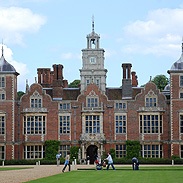 Blickling Hall
Blickling Hall
Jacobean red brick mansion owned by The National Trust. There are fine tapestries and furniture on display. A former house on the site was the family home of the Bullen family – daughter Anne went to court as Anne Boleyn (Henry VIII’s second wife). The grounds include wonderful formal gardens, an orangery and parkland with great walks, vistas and lake.
Brancaster
Haunting at sunset, sparkling and alive at high tide – the little fishing village of Brancaster is a jolly sort of place full of bustle and boats – where the sea air has a extra frisson of anticipation. A great place to take part or observe, this is what messing about by the water is all about. Brancaster is noted for its mussels and they are spectacular views over the saltmarshes.
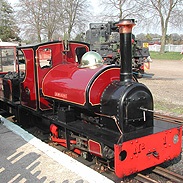 Bressingham
Bressingham
Twenty acres of beautiful trees, shrubs and flowers, alongside over fifty steam engines – some of which run on the four narrow gauge lines through woodland, gardens and beside the River Waveney. The gardens are the legacy of Alan Bloom, and include the famed Dell Garden, rich with herbaceous borders; alongside Foggy Bottom, the shrub paradise created by Alan’s son, Adrian. Take a nostaglic ride on the Victorian Gallopers, or visit the museum with its vintage vehicles and Dad’s Army memorabilia.
Burnham Market
The largest of seven ‘Burnham’ villages, Burnham Market has affectionately been given the alternative name of Chelsea-on-Sea. The 18th C. houses, refined green and selection of craft, book and antique shops lend it undeniable serenity and elegance. This area is connected with the great seafarer Lord Nelson, whost father was rector at nearby Burnham Thorpe.
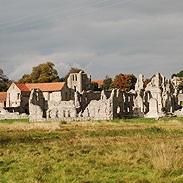 Castle Acre
Castle Acre
A tiny walled medieval town sitting between a great castle and a rich priory. The castle began as a Norman manor house and was rebuilt as a fortress in the 12th C. complete with the massive earthworks which are much in evidence today. The priory is one of the largest and best preserved monastic sites in England dating back to 1090. Largely in ruins, the lower section of the magnificent west front is still mainly intact. The re-created herb garden is well worth a visit.
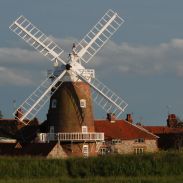 Cley
Cley
Once an important wool port, Cley is now a charming little village with flint and brick cottages, alongside the occasional seafood shop and tearoom. It is most famously recognised by its redbrick tower mill which punctuates the landscape, looking out over the saltmarshes towards the sea and the Norfolk Coast Path.
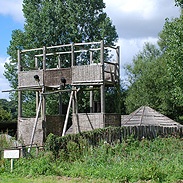 Cockley Cley
Cockley Cley
Set within The Brecks, this tiny settlement is named after a local spring. Behind the ancient church is the site of a Roman settlement. Cockley Cley is home to a reconstruction of an Iceni tribal village reconstruction, believed to be on the original site. There is also a nature reserve and museums to explore.
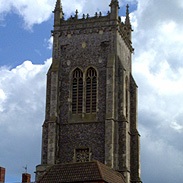 Cromer
Cromer
Cromer is synonymous with delicious fresh crabs, caught by its fleet of little fishing boats which still work from the sandy beaches. A gentle seaside resort, Cromer stands on the cliff tops, looking out respectably to the sea with a certain detached elegance. The town is renowned for its pier and lifeboat station.
Diss
Set in the Waveney Valley, this thriving market town borders a six acre mere, home to a great variety of wildfowl. The town still retains much of its old world charm with a maze of streets clustered around St. Mary’s Church which has a tower dating from the 1300s.The Market Square is surrounded by timber-framed houses from the 16th C. alongside some lovely Georgian fronts.
East Dereham
With history going back to St Withburga, who founded a religious community here in the 7th C. – this is a lively market town with lots of 18th C. buildings and a partly Norman church with a detached bell tower. There are some great examples of pargetting (decorative plasterwork) at Bishop Bonner’s Cottages.
Fakenham
A thriving market town on the River Wensum which has clusters of tiny lanes and courtyards going off from its handsome Market Place. The church dates in part from the 15th C. and has been under the patronage of Trinity College in Cambridge since 1547. The town has its own National Hunt racecourse.
Gressenhall
A lovely little village lost in the Norfolk countryside, now – as in the past – particularly well known for its workhouse! This building and its surrounding farmlands are now home to a museum of Norfolk rural life, with a home farm (housing working Suffolk Punch horses), chapel, school room, reconstructed shops and the original main workhouse building full of fascinating and family-friendly displays. There are regular events featuring costumed characters and special tours.
Grimes Graves
These Neolithic flint mines set in the heart of the Breckland area are over four thousand years old and were excavated in the 1870’s. On this amazing site there are over 300 pits and shafts. One shaft is open to the public where you can put on a hard hat and descend 30ft to a chamber with radiating galleries. There is also a small exhibition centre on the site which shows some of the prehistoric finds and explains the early industry which took place at Grimes Graves.
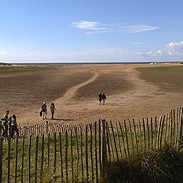 Holkham Beach
Holkham Beach
Head down Lady Anne’s Drive between the marshes to Holkham Gap, and some of the widest sandy stretches you may ever see. The sea is out there, but the beach which seems endless and golden is disturbed only by little streamlets and shallow water pools. The soft, flat sand is backed by dunes in places as well as strips of pine forest. The Peddars Way long distance path runs along the beach and through the trees here from Burnham Overy to Wells-next-the-Sea.
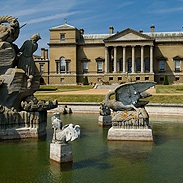 Holkham Hall
Holkham Hall
Home to the Earl of Leicester and his family, this 18th C. Palladian-style mansion is part of a great agricultural estate and a living treasure house of artistic and cultural history. Explore impressive grand interiors (such as the Marble Hall) and fascinating old kitchens. There is an interesting Bygones Museum, History of Farming Exhibition and wonderful parkland to explore, complete with deer, walled gardens, an ice house, obelisk and massive fountains.
Holt
A small, attractive country town set just inland from the coast in undulating countryside. A regular finalist in the Britain in Bloom competition, the red-brick and flint faced Georgian buildings look a picture when festooned with hanging baskets. Holt is noted for its bookshops, antiques and bric-a-brac shops.
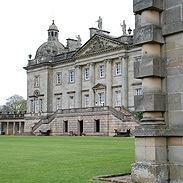 Houghton Hall
Houghton Hall
This splendid Palladian house was built by Sir Robert Walpole, Great Britain’s first Prime Minister. Magnificently furnished state rooms designed by William Kent and a Model Soldier Museum displaying some 20,000 troops! The five acre walled garden is a real treat of summer colour.
Hunstanton
Known as England’s only resort on the East Coast to actually face west, Hunstanton is an attractive seaside haunt with wide greens lined sedately by Victorian and Georgian architecture. The beaches here are large and sandy. To the north the village of Old Hunstanton has distinctive red and white striped cliffs.
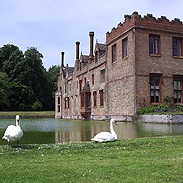 Oxburgh Hall
Oxburgh Hall
Owned by The National Trust, this 15th C. moated red-brick and fortified manor house was built by the Bedingfeld family. It has an impressive gatehouse which stands some 80ft tall. There are extensive connections with Mary Queen of Scots, including a display of some of her needlework. The house has a very rich history with fascinating insights such as a secret priest’s hole. There is a Catholic chapel on the site, lovely gardens and woodland walks.
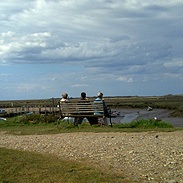 Morston
Morston
Cobbles, cottages and a cluster of lanes and quaysides, Morston is as quaint as Norfolk comes. The surrounding marshes turn purple with sea lavender come the summer months, and as well as welcoming sailing boats, the quayside is home to boat trips out to Blakeney Point to see the seals.
North Norfolk Railway (Sheringham and Holt)
This full size steam railway runs alongside the North Norfolk Coast between the attractive country town of Holt and the seaside resort of Sheringham. It is known as ‘The Poppy Line’. Bikes can be carried on the trains so that you can continue cycling without having to return to Holt.
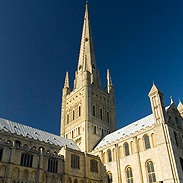 Norwich
Norwich
The most complete medieval city in Britain, Norwich once had a church for every Sunday of the year and a pub for every day of the year… or so the saying goes! There are over 1,500 historic buildings still within its walls today including a fine Norman castle keep, a 900 year old cathedral, plus intricate networks of winding streets and cobbled lanes such as Elm Hill. The River Wensum runs through the city, and there are boat trips on offer which also travel out towards The Broads. The cultural scene here is lively and the shopping great with new modern centres, lanes lined with interesting boutiques and specialist shops. The fine Victorian Royal Arcade with its stained glass and Art Nouveau styling is home of the famous Mustard Shop.
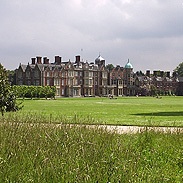 Sandringham
Sandringham
The country retreat of H.M. The Queen, this is a delightful and very personal house set in 60 acres of grounds. In the house, there are a good number of rooms to visit including the state ballroom; whereas the stable block houses a museum full of special royal vehicles and mementoes, including Prince Charles’ pedal cars. The surrounding parkland have lovely walks with views across the lake towards the house, and are well known for their show of Rhododendrons and Camelias.
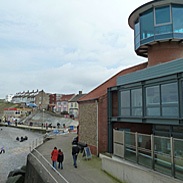 Sheringham
Sheringham
Little boats still bring in a daily catch to this traditional seaside resort which grew up out of an old fishing village. At low tide, the large, sandy beach reveals rock pools and fossils can be found on the stretch between Sheringham and Cromer. The North Norfolk Railway operates steam and diesel train rides from here.
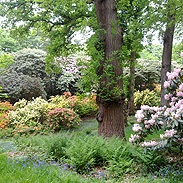 Sheringham Park
Sheringham Park
In the safe-keeping of The National Trust, Sheringham Park is renowned for its display of Rhododendrons (from early May into June), alongside superb views from gazebo’s across rolling landscapes to the North Norfolk Coast – courtesy of landscape gardener Humphry Repton. He described this as his favourite work. This is a great place to get a glimpse of the steam trains of the North Norfolk Railway as they cut through the timeless countryside.
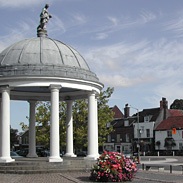 Swaffham
Swaffham
Thriving and traditional town, with an 18th C. Butter Cross and spacious market place surrounded by Georgian buildings. A colourful sign commemorates the legendary Pedlar of Swaffham whose dreams led him to find treasure in his garden. He spent some of his fortune at the magnificent 15th C. church with its hammerbeam roof adorned with hundreds of carved angels. At the museum, there are tales about local lad, Howard Carter, who discovered the tomb of Egyptian King, Tutankhamen.
RSPB Snettisham Nature Reserve
Set on the only part of the east coast which faces west, this RSPB reserve attracts waders, ducks and geese. The high tide here creates one of the UK’s great wildlife spectacle, as thousands of birds are forced off the vast mudflats of The Wash onto the reserve’s lagoons.
100th Bomb Group Memorial Museum, Thorpe Abbotts
Located approximately 5 miles east of the town of Diss, visitors can step into the 1940’s at this former World War II USAAF base. The museum is housed in the original (restored) control tower, with wonderful collections of military memorabilia, photographs, uniforms and documents.
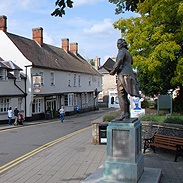 Thetford
Thetford
A thriving market town, which a thousand years ago was the capital of East Anglia. It kept its importance all the way through to the Middle Ages and has a rich history – from Iron Age earthworks to a Norman castle mound and the remains of a 12th C. priory. The town centre has many fine Medieval and Georgian buildings, and there is a fascinating museum in The Ancient House to put everything in its local and regional context. Thetford was the birthplace of radical thinker Thomas Paine.
Thornham
A little village lined with flint and red-brick cottages, renowned for its smuggling history, creeks and sandy beach. During the 18th and 19th C. it had a large harbour and was a popular place for smugglers, who would sink their contraband off the coast in waterproof containers.
RSPB Titchwell Marsh Nature Reserve
Set on the North Norfolk Coast, this mosaic of wetland and coastal habitats are carefully safeguarded to attract a diversity of bird species. The reserve boasts nationally important numbers of Marsh Harriers, Bittern, Bearded Tits and Avocets. Reed beds and shallow lagoons lead down to the sandy beach.
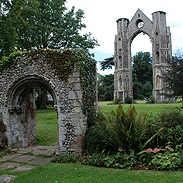 Walsingham, Little
Walsingham, Little
A famous pilgrimage centre since 1061 – when the Lady of the Manor had a vision of the Virgin Mary. The subsequent shrine became one of the most important in Europe. This picturesque village still has the look of a medieval market town. Look out for the octagonal pump-house and 12th C. priory ruins.
Watton
This busy rural centre is home to the only church in the country which is wider than it is long! There is also an unusual clock tower dated 1679. The High Street has many little shops in 18th and 19th C. buildings. Wayland Wood to the south has connections with the famous story of the ‘Babes in the Wood’.
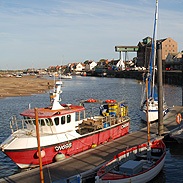 Wells-next-the-Sea
Wells-next-the-Sea
A picturesque town of narrow streets and flint cottages, with chic shops, eateries and art galleries. Wells is still a small port used by coasters, as well as the local shrimp and whelk boats. The lovely sandy beach one mile north, with its stilted beach huts, can be reached by a narrow gauge railway.
West Acre
Set on the north side of the River Nar in a heavily wooded valley, this little village was once home to a major Cluniac priory. Today there are only a few remains of the building itself near the church. Splendid walled gardens attached to a plant centre are a major draw to the village.
Wroxham and Hoveton
These adjoining settlements are linked by a narrow humpbacked bridge spanning the River Bure. This is the ‘capital of the Broads’, Britain’s largest protected wetland, home to rare plants and animals and one of the country’s newest National Parks. With its boatyards, chandleries and ‘Roy’s’ – the world’s largest village store, Wroxham and Hoveton are a great place to hire or join a guided boat excursion to explore the flora and fauna of this watery paradise.





